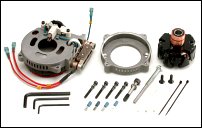 |
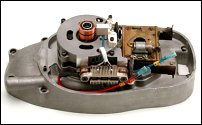 |
 |
 |
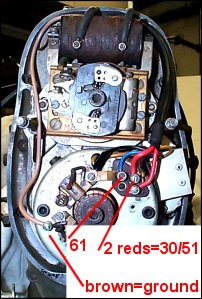 |
2. Once your old 6-volt battery is disconnected, remove it. Then remove the front generator cover from the engine. <------- Note that there are 4 wires attached to the 6-volt generator. The wires and corresponding terminals are: A) One blue wire (which runs to the charge light) is attached to terminal # 61 on the generator. B) Two red, (or sometimes one red, one black wire) heavy wires attached to terminals # 30/51 on the generator. (One of these wires runs to the headlight main switch, the other to the (+) terminal of the battery) C) One brown wire (ground) which is attached to the unmarked terminal next to the negative (-) brush on the lower left face of the generator. Remove All of these wires from their respective terminals and move them aside temporarily. |
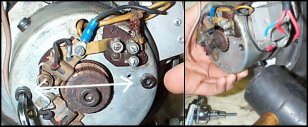 |
3. Use the 5mm allen wrench (supplied in the kit) and remove the two socket head cap screws which retain the field of the generator to the front timing gear cover of the engine. Gently remove the field from the gear cover and set it aside. It is sometimes necessary to gently bump the side of the generator field with a mallet to dislodge it from the cover. |
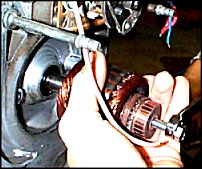 |
4. Use the 6mm allen wrench (supplied in the kit) and remove the socket head cap screw that retains the armature of the generator on the nose of the crankshaft. In place of the socket head cap screw, install the special puller bolt (supplied in the kit) and screw the puller bolt in, until it bottoms in the hole. Place one hand on the body of the armature, and use a 13mm wrench (not supplied) to tighten the puller bolt. The puller bolt will pop the armature off of the nose of the crankshaft, and your spare hand will keep the armature from falling on the floor. Occasionally, the puller bolt will require quite a bit of force, and may require you to “rap” the end of the puller bolt with a hammer, to shock the assembly, and to make the armature pop off the shaft. |